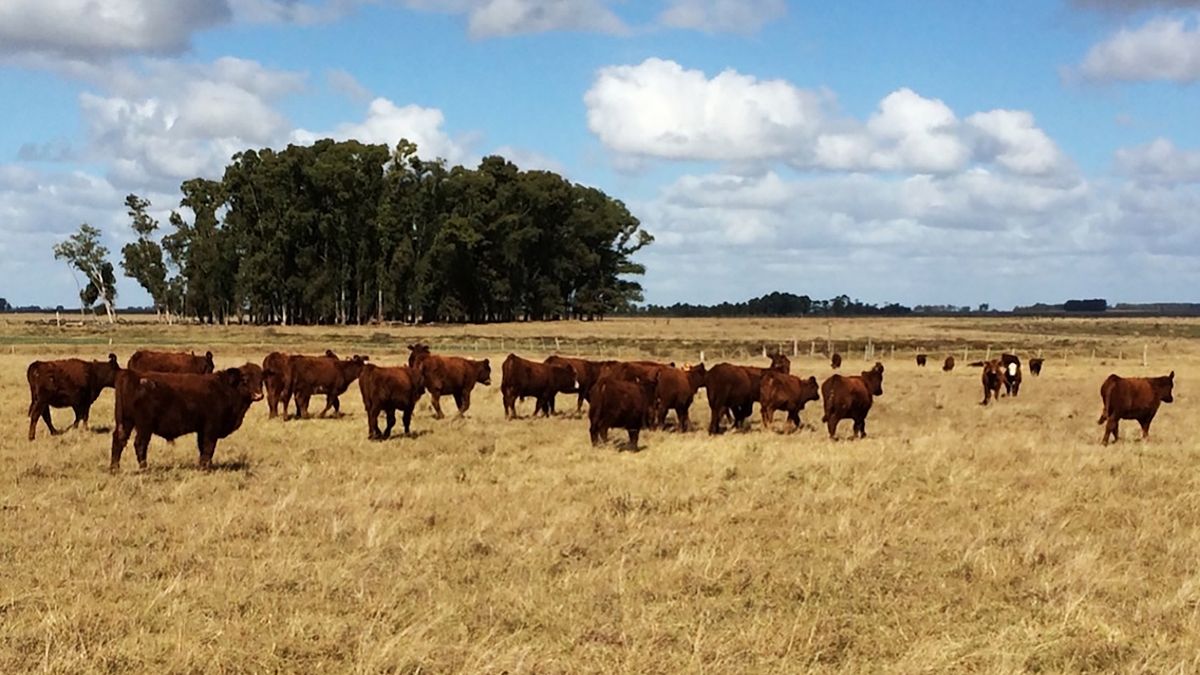The Division of Veterinary Laboratories (Dilave) of the Ministry of Livestock, Agriculture and Fisheries (MGAP) reported that the country loses some 27.9 million dollars per year for bovine cattle killed by ingesting toxic plants. La Dilave also warned producers about the most common diseases that occur in a post-drought scenario.
In the three months following an extreme drought, like the one the country is going through, ecological conditions change, causing the relative incidence of diseases in cattle to vary. It is during these periods where poisoning tends to predominate because toxic plants are the first to regrow in front of hungry cattle.
Dilave’s Diagnostic Records Unit (Uniradd) keeps tens of thousands of coded and georeferenced records about livestock diseases diagnosed in Uruguay in the last 50 years, being one of the few countries in the world to have a similar system of historical records.
What are the most common diseases after a drought?
— Hydrocyanic acid poisoning – sorghum: In recent days, several high-mortality outbreaks have been reported in some parts of the country. The forage species of the genus Sorghum, and the weed known as Aleppo sorghum (Sorghum halepense) contain cyanogenic glycosides, which are released by enzymatic action in the rumen of the animals or within the plants themselves, producing hydrocyanic acid (HCN).
This compound is highly toxic to ruminants, and causes an acute picture of hypoxia, characterized by difficulty breathing, anxiety, restlessness, nervous signs, and death 1-2 hours after ingestion of the plant.
— Honeygrass tremorgenic syndrome (Paspalum sp): During autumn, after dry summers, the inflorescences of Paspalum dilatatum (honey grass) and P. notatum present a large number of Claviceps paspali sclerotia. This situation is aggravated in those areas where there was a massive proliferation of insects such as the Astylus atromaculatus or “7 de Oro”.
The sclerotia contain various tremorgenic toxins which, when ingested by cattle, produce a typical tremorgenic syndrome. Animals show aggressiveness, erect ears, fine tremors, head shaking, and fall if overly excited.
The disease has a moderate morbidity between fifteen% and the 30%and its mortality is very low. Nevertheless, weight loss is very significant in said animals. This syndrome is reversible if the animals are removed from the infected pastures, recovering completely between 10 to 15 days.
— Coccidiosis (Eimeria spp.) in calves: Intestinal parasitic disease, which affects calves, mainly after weaning. It is a disease caused by protozoa of the Eimeria genus (Eimeria bovis and Eimeria zuernii), and its highest incidence is in autumn, when humidity and temperature are favorable.
In milder cases, animals may present with mild diarrhea, loss of appetite, and weakness. However, in more serious cases, the stools appear liquid, abundant, dark black or red in color, with traces of blood or clots with a very unpleasant odor, since the agent produces significant enterocolitis.
In these cases, the animal is very weak, with anemia, stops eating, presents dehydration, weight loss, remains prostrate and finally die.
— Bocopa – poisoning by the fungus Ramaria flavo-brunescens: Cattle disease highly toxic caused by the fungus Ramaria flavo-brunnescens, known as the “Eucalyptus fungus”. It presents high morbidity and mortality and mainly affects cattle and sheep, but it can also occur in domestic pigs, wild boars and horses.
The growth of the fungus occurs in Eucalyptus forests, and is massive in autumn, especially after dry summers like this year. Poisoning occurs when animals ingest the fungus, and symptoms can be seen 3 to 4 days after consumption.
These consist of drooling, progressive thinning due to extensive ulcerations and detachment of the epithelium of the tongue, difficulty moving due to detachment of the hooves or hooves, and hair loss, especially on the tail and even detachment and fall of the horns in animals. horned.
Due to injuries, deaths occur between 8 and 12 days after poisoningdue to starvation and dehydration. In sheep, and more rarely in cattle, the disease presents with severe nervous signs, convulsions and hemorrhages in the anterior chamber of the eyes. The lethality reaches 38% in cattle and 49% in sheep.
— Mío-Mío poisoning (Baccharis coridofolia): Commonly known as Mío-Mío or romerillo, it is a perennial sub-shrub widely distributed in our country, south of Brazilnorth of Argentina and Paraguayan. It is a highly toxic species for cattle, sheep and horses due to the content of macrocyclic trichothecenes.
Intoxicated animals present anorexia, mild tympanism, drooling, ocular discharge, dyspnea, diarrhea or dry feces, muscle tremors, hindlimb ataxia, groans, tachycardia, and decubitus. The death of the animals occurs between 5 and 48 hours after consuming the plant.
Source: Ambito




